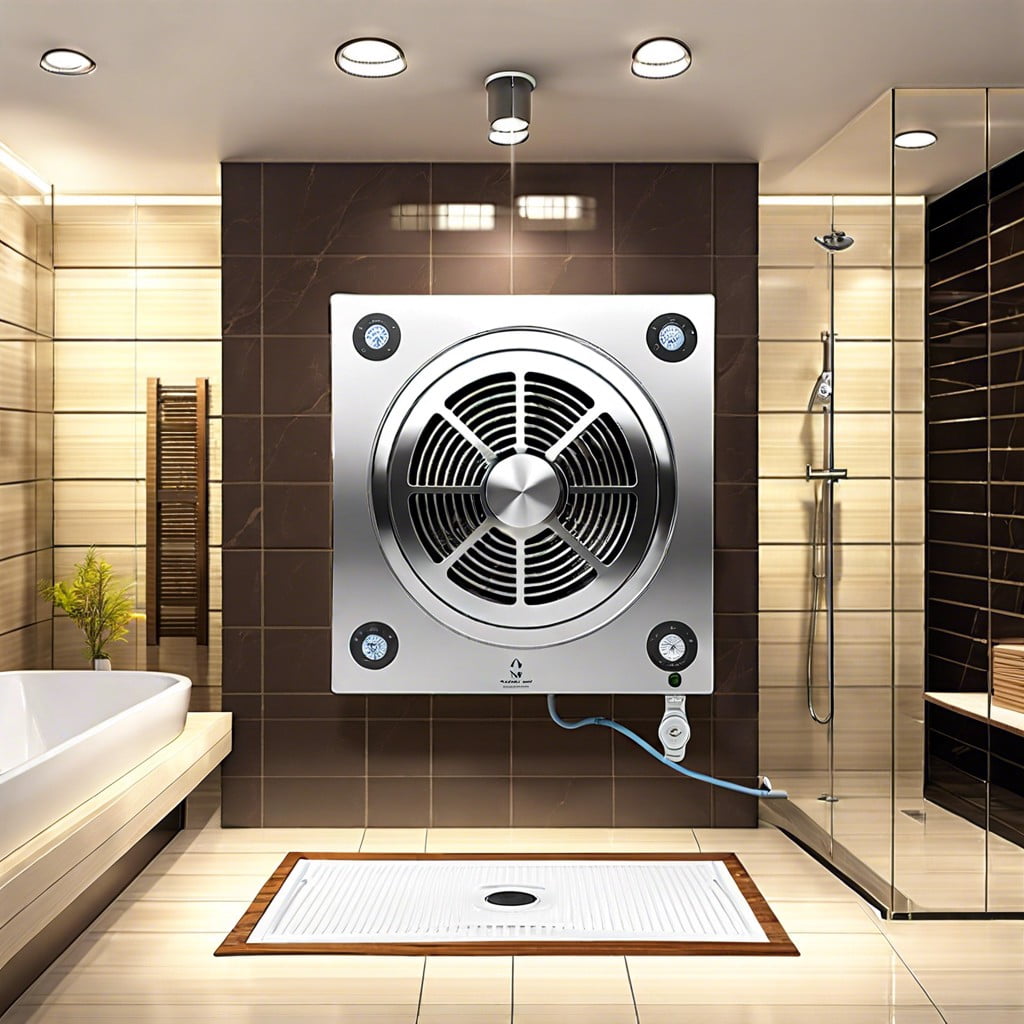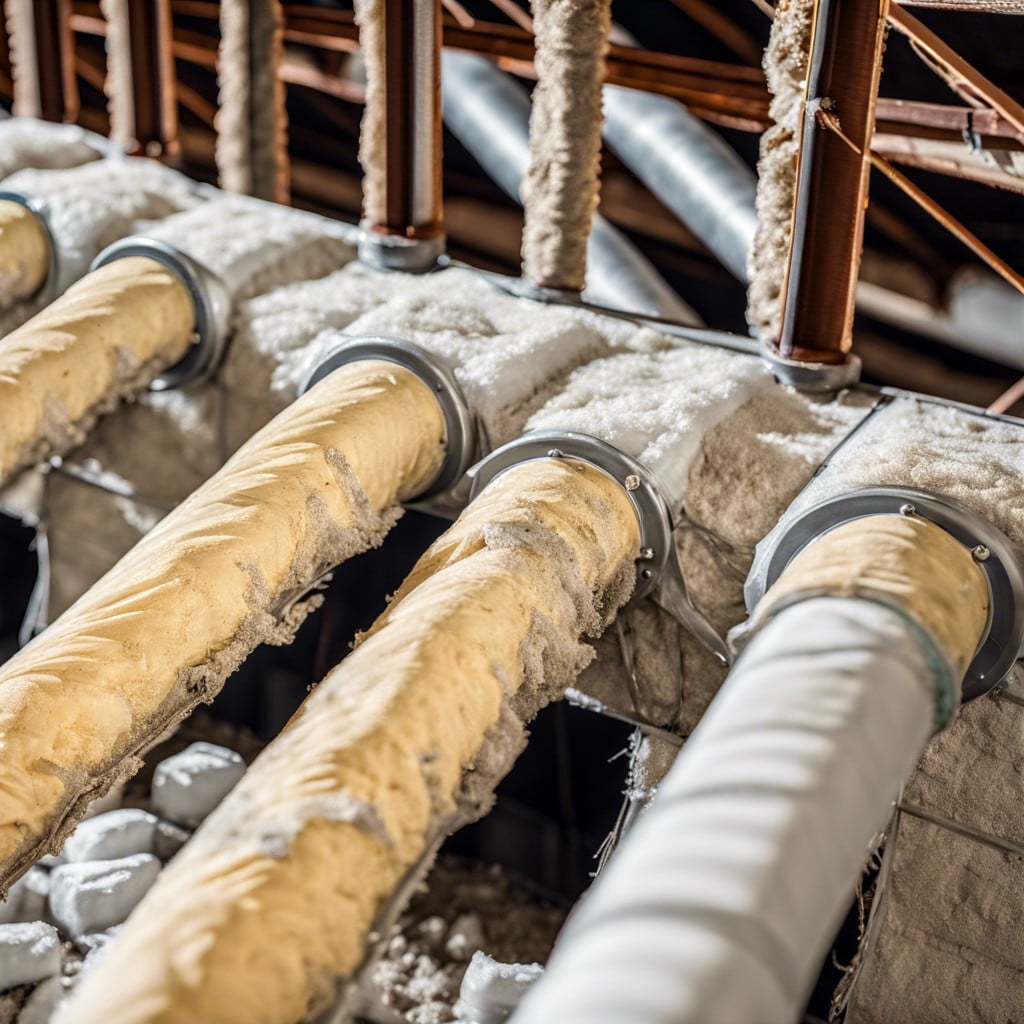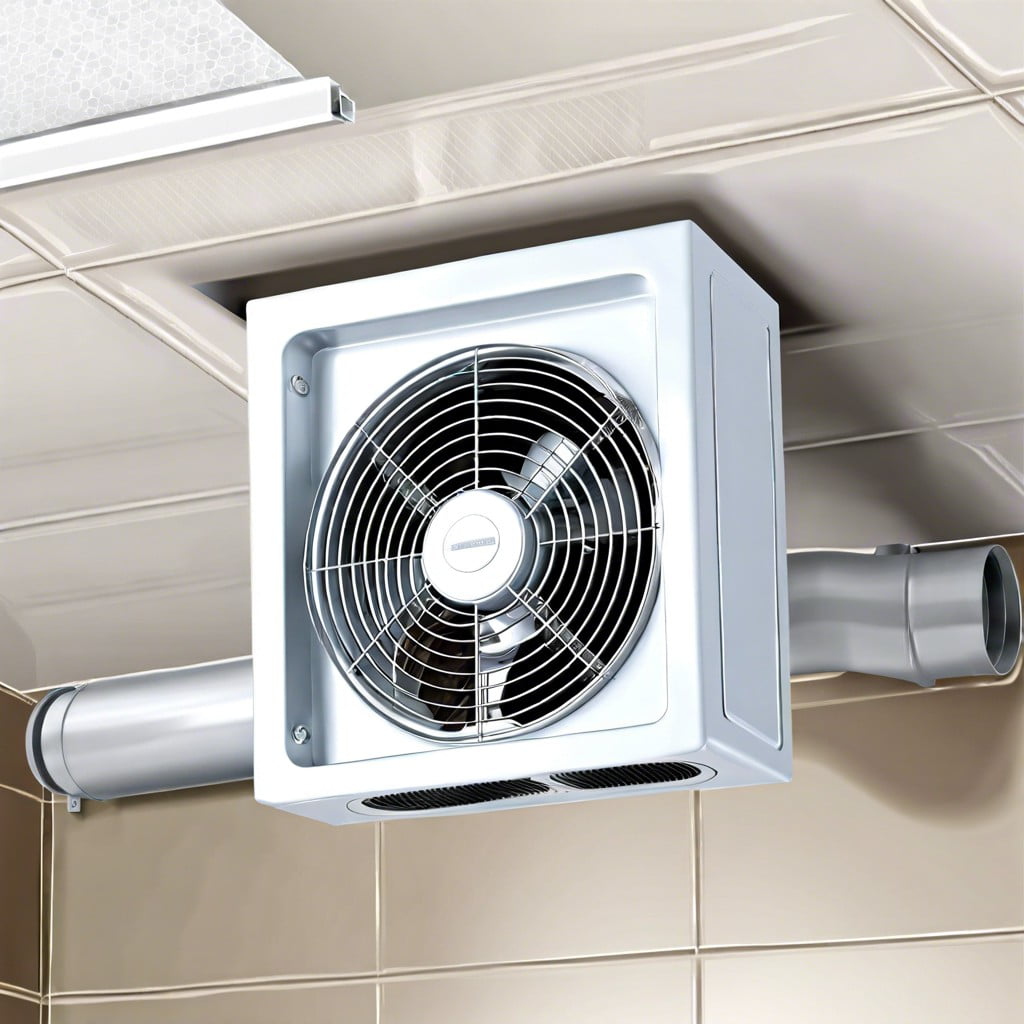Last updated on
Learn how to install an exhaust fan in your bathroom to improve air quality and prevent mold growth with straightforward, step-by-step instructions.
Key takeaways:
- Determine appropriate fan size based on bathroom dimensions and fixtures.
- Choose a suitable mounting location and consider the exhaust route.
- Safely remove the old bathroom fan, disconnecting wiring and detaching it from the ceiling.
- Install the new exhaust fan, ensuring it aligns with the exhaust hole and is securely attached.
- Connect the ventilation ductwork and install the exterior vent, optimizing airflow and preventing air infiltration.
Determine the Size of the Bathroom Exhaust Fan
Selecting the appropriate fan size is essential for optimal performance. Here’s a straightforward formula: measure your bathroom in square feet and aim for 1 CFM (cubic feet per minute) per square foot, with a minimum of 50 CFM. For bathrooms over 100 square feet, factor in additional CFM requirements for fixtures: add 50 CFM for each toilet, shower, or bathtub, and 100 CFM for a jetted tub.
Inadequate ventilation leads to moisture buildup, promoting mold growth, while an oversized fan can create unnecessary noise and energy usage. Consider these guidelines a starting point; certain conditions, such as exceptionally tall ceilings or bathroom configurations, may necessitate adjustments. Always refer to local building codes for specific ventilation requirements.
Determine the Mounting Location and the Exhaust Route
Choosing the right spot for installation is critical not only for effectiveness but also for safety and compliance with building codes. Aim for the ceiling directly above or near the shower or bathtub for the most efficient moisture removal. However, you must avoid placing the fan over a tub or shower without a GFCI circuit; this is a no-go due to electrical hazard concerns.
Next, ponder the path from the fan to the outside. A short, straight route will allow the fan to expel moist air more efficiently. If routing the duct through the roof, ensure it’s as vertical as possible to prevent water from seeping back into the bathroom. For sidewall venting, make sure the ductwork has a slight downward slant towards the outside to avoid drips coming back into the fan housing. Avoid routing through soffits where moist air can be drawn back into the attic, fostering mildew or rot. Keep in mind that every turn or elbow in the ductwork adds to the static pressure the fan must overcome, so keep those to a minimum.
Remove the Old Bathroom Fan (if Applicable)
Turning off the power at the circuit breaker ensures safety before beginning the extraction process. It’s crucial to verify that the electrical connection is inactive using a non-contact voltage tester.
After removing the grill cover, unscrew and carefully lower the fan unit. Support the fan with one hand as you disconnect the wiring to prevent any damage to the electrical lines.
The exhaust fan is typically attached to a joist or metal housing. You’ll need to identify these mounting points and use the appropriate tools to detach the fan.
Once loose, gently pull the fan from the ceiling, being cautious of any insulation or debris that might fall out. Keep in mind that if the fan is connected to ductwork, you must first detach the duct before removing the fan from the housing.
If sealing material or caulking was used to seal the fan to the ceiling, carefully cut through the sealant with a utility knife to release the fan, taking care not to damage the surrounding ceiling material.
By correctly unfastening and disconnecting the current fan, you pave the way for a smooth installation of the new unit.
Install the New Exhaust Fan (combine Steps Related to Positioning, Attaching, and Making Wire Connections)
Once you’ve removed the outdated fan or prepped the new location, it’s time to focus on the star of the show: your chosen exhaust fan. Ensure it aligns perfectly with the exhaust hole and is secured firmly to the joists. Most fans come with brackets or a mounting kit, but don’t skimp on making sure it’s level and stable; a fan that rattles is a nemesis to tranquility.
Wiring can intimidate, but basic knowledge and following manufacturer instructions can allay your fears. Start by connecting the house wiring to the fan’s wiring, matching like colors – white to white, black to black, and don’t forget the green screw for the grounding wire, usually grounding to the box or with a wire to the ground lead. It’s like a dance of electrons you’re choreographing, with each connection capped off by wire nuts for safety’s encore.
Lastly, integrate the fan with the wall switch. For fans with built-in lights or humidity sensors, additional wiring steps may be required to ensure these features function properly, so follow the diagram closely. Remember, double-check each connection and secure the fan correctly—doing it right means you won’t have to revisit the internal workings any time soon.
Install the Ventilation Ductwork and Exterior Vent (combine Steps Related to Attic Duct, Wall Cap, and Exhaust Routing)
Efficient ventilation relies on a clear path for air to exit. Connect the fan’s housing to the ductwork, ensuring it’s as straight and short as possible to optimize air flow and reduce energy consumption. Utilize foil duct tape, not screws, to fasten the ducts—screws can catch lint and impede exhaust.
When dealing with the exterior vent, opt for one with a backdraft damper to prevent outside air from infiltrating when the fan isn’t running. Cutting the appropriate hole for the vent can be meticulous—precision is key to avoid structural damage and ensure a snug fit for energy efficiency.
Remember, the position of your exterior vent is pivotal. Place it away from windows and doors to prevent expelled moist air from re-entering. Seal any gaps between the vent and siding with exterior caulk to fortify against leaks and drafts. This layer of protection is not just about comfort; it’s about preventing moisture damage to your home’s exterior envelope.
Continue reading:
Recap



